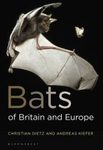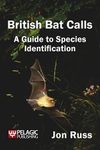About this book
Phyllostomidae is a large (> 140 species), diverse clade of Neotropical bats. Different species in this family feed on blood, insects, vertebrates, nectar, pollen, and fruits. We investigated phylogenetic relationships among all genera of phyllostomid bats and tested monophyly of several genera (e.g., Micronycteris, Mimon, Artibeus, Vampyressa) using 150 morphological, karyological, and molecular characters. Results of parsimony analyses of these combined data indicate that all traditionally recognized phyllostomid subfamilies are monophyletic and that most taxa that share feeding specializations form clades. These results largely agree with studies that have used a taxonomic congruence approach to evaluate karyological, immunological, and limited sets of morphological characters, although our finding that Phyllostominae is monophyletic is novel. Our results indicate that several genera (Micronycteris, Artibeus, and Vampyressa) are not monophyletic. We propose a new classification for Phyllostomidae that better reflects hypothesized evolutionary relationships. Important features of this new classification include: (1) formal recognition of two clades that group nectarivorous and frugivorous subfamilies, respectively, (2) redefinition of Glossophaginae and recognition of two tribal-level taxa within that subfamily, (3) recognition of several tribal-level taxa in Phyllostominae, (4) formal recognition of two clades that have been colloquially referred to as “short-faced” and “long-faced” stenodermatines, (5) elevation of the subgenera of Micronycteris to generic rank, (6) recognition of Mesophylla as a junior synonym of Ectophylla, (7) recognition of Enchisthenes as a distinct genus, and (8) retention of Dermanura and Koopmania as subgenera of Artibeus. Although Vampyressa is not monophyletic in our tree, we recommend no nomenclatural change because we did not include all Vampyressa species in our study.
Comparisons of character and taxonomic congruence approaches indicate that character congruence provides improved resolution of relationships among phyllostomids. Many data sets are informative only at limited hierarchical levels or in certain portions of the phyllostomid tree. Although both chromosomal and immunological data provide additional support for several clades that we identified, these data sets are incongruent with many aspects of our phylogenetic results. These conflicts may be due to methodological constraints associated with the use of karyological and immunological data (e.g., problems with assessing homologies and distinguishing primitive from derived traits). Among other observations, we find that Macrotus waterhousii, which has been thought to have the primitive karyotype for the family, nests well within the phyllostomine clade. This suggests that results of previous analyses of chromosomal data may need to be reevaluated.
Mapping characters and behaviors on our phylogenetic tree provides a context for evaluating hypotheses of evolution in Phyllostomidae. Although previous studies of uterine evolution in phyllostomids and other mammals have generally supported the unidirectional progressive fusion hypothesis, our results indicate that intermediate stages of external uterine fusion are often derived relative to the fully simplex condition, and that reversals also occur with respect to internal uterine fusion. Uterine fusion therefore appears to be neither completely unidirectional nor progressive in Phyllostomidae.
Evolution of the vibrissae and noseleaf is similarly complex and homoplasy is common in these structures; however, many transformations in these systems diagnose clades of phyllostomids. Within Phyllostomidae, there is considerable derived reduction in numbers of vibrissae present in various vibrissal clusters. The phyllostomid noseleaf seems to have become a much more elaborate and complex structure over evolutionary time. Primitively within the family, the spear was short, the internarial region was flat, and the horseshoe was undifferentiated from the upper lip. Subsequently, within the various subfamilies, the spear became more elongate, the central rib and other internarial structures evolved, and the labial horseshoe became flaplike or cupped in some taxa.
Dietary evolution in phyllostomids appears somewhat more complex than previously thought. We find that most of the major dietary guilds (e.g., frugivory, sanguivory) are represented by a single large clade within Phyllostomidae, indicating that each feeding specialization evolved once. However, reversals do occur (e.g., loss of nectar- and pollen-feeding in many phyllostomines and stenodermatines), and some specializations may have evolved more than once (e.g., carnivory).
Customer Reviews









































